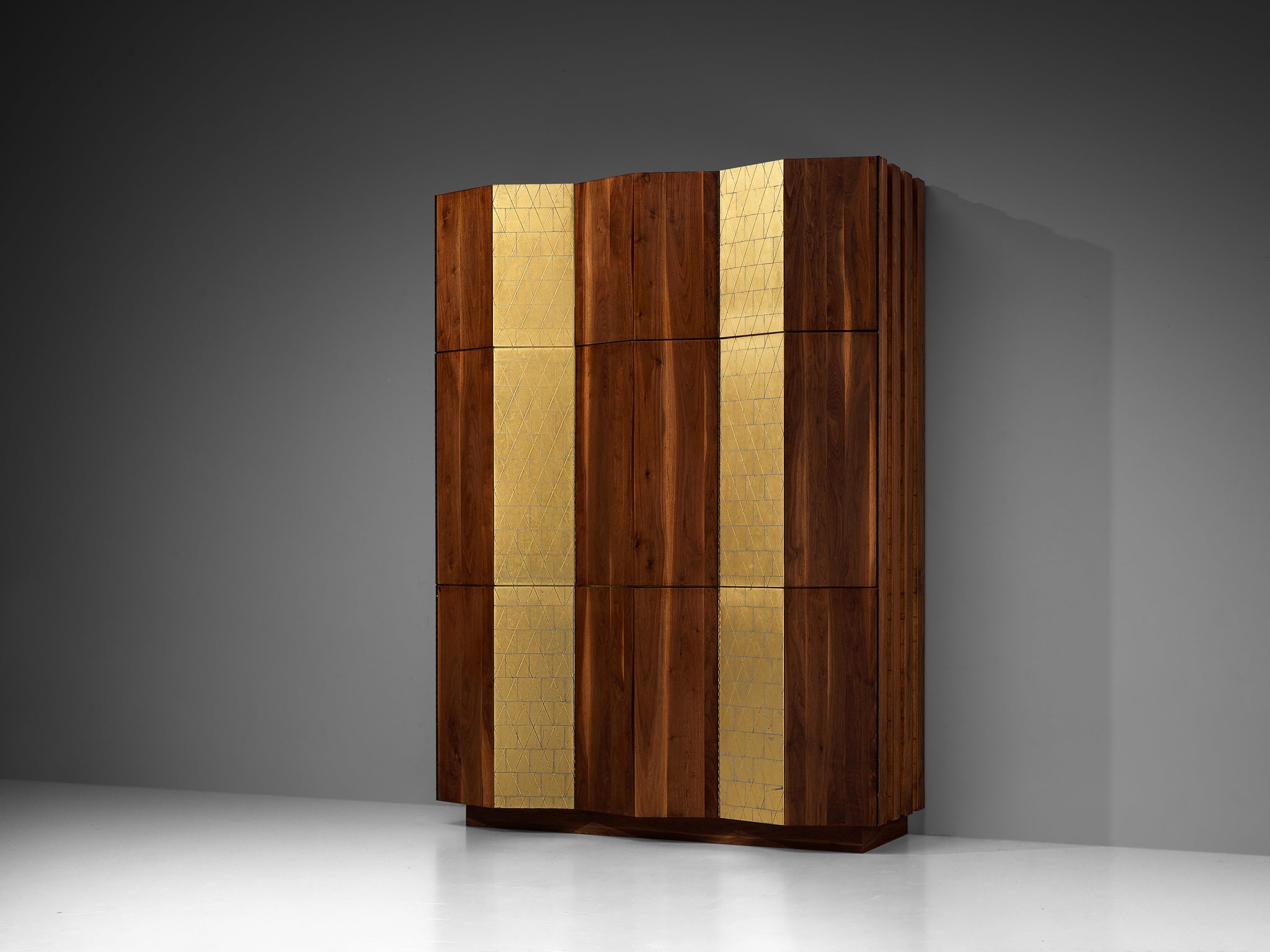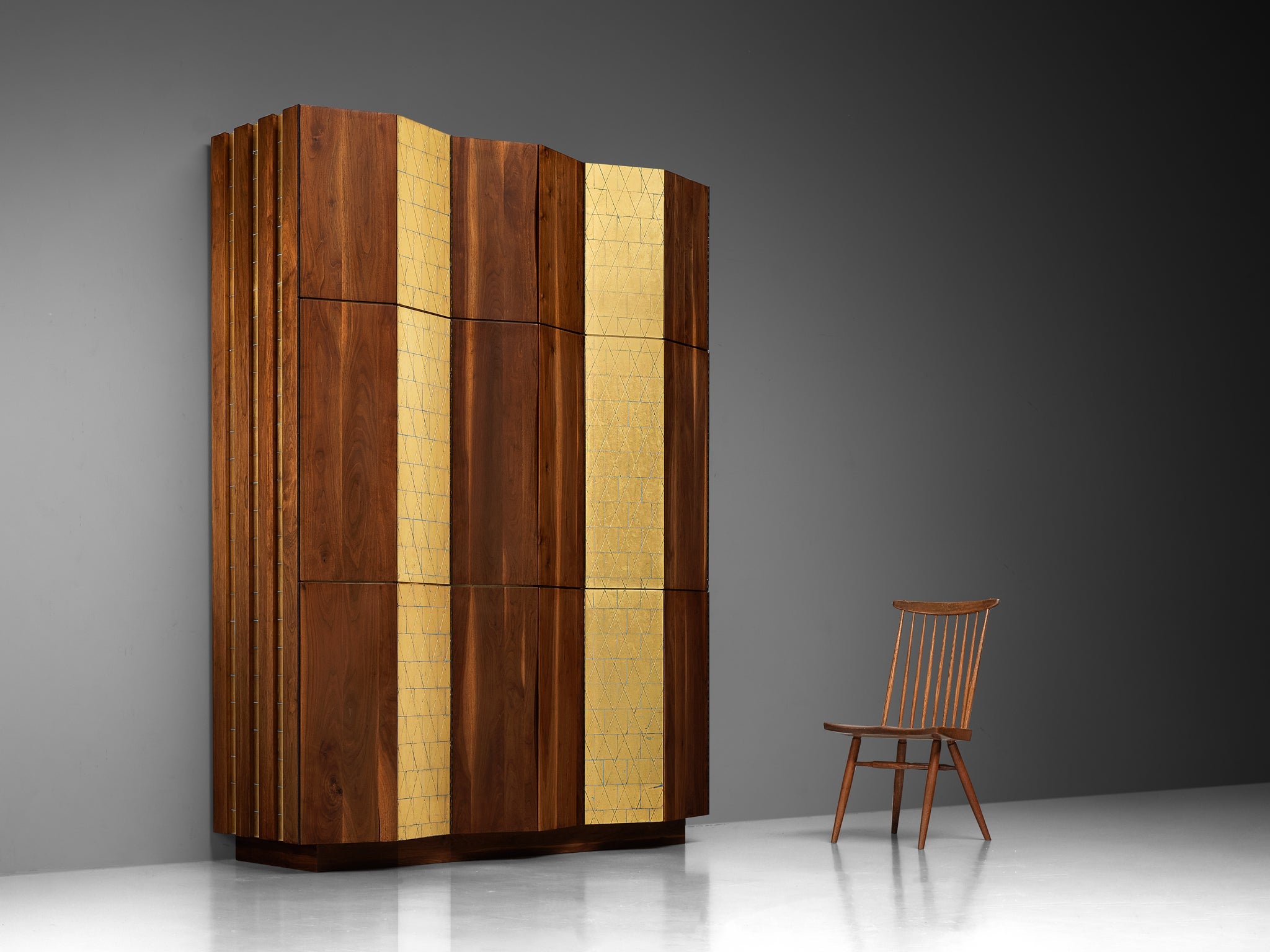















Phillip Lloyd Powell Large Cabinet in Walnut and Gold Leaf
Phillip Lloyd Powell, large cabinet, walnut, gold leaf, painted wood, United States, circa 1965
Crafted by the skilled hands of Phillip Lloyd Powell, this highboard stands as a testament to the designer’s bespoke artistry. It is a unique creation commissioned specifically for a private client during the mid-1960s. This cabinet commands attention with its imposing stature and substantial size, measuring 241 cm/94.88 inches in height. The cabinet is organized into six distinct sections, each featuring a consistent design. Within each compartment, a folding door framed in walnut reveals a central stroke adorned with intricately carved rhomboid and squared patterns embellished with gold leaf. The open lines allow glimpses of blue paint to peek through. The sides of the cabinet feature a slatted framework of rectangular walnut slats arranged against a radiant golden backdrop with horizontal carvings. The interior is painted in a green-blueish shade, applied unevenly with visible brushstrokes. This creates a visually captivating contrast between the harmonious blend of gold and warm walnut tones on the exterior and the vivid burst of color within. His contemporary and showroom partner Paul Evans also used expressive paint colors to decorate the insides of some of his pieces. The interior is thoughtfully organized to ensure practical utility, featuring a diverse array of storage elements including a movable cabinet and platform, pigeonholes, and a drawer equipped with organizers. Through its essential form, meticulous material selection, and masterful woodwork, this grand cabinet serves as a testament to Phillip Lloyd Powell's unparalleled craftsmanship and distinctive artistic vision.
Phillip Lloyd Powell (1919-2008) is one of the essential members of the American Studio Craft Movement. Born in Germantown, Pennsylvania, in 1919, he discovered his love for furniture design at a young age. He already began crafting his own furniture and custom furniture for family and friends in his adolescent years. He studied engineering at Drexel university but was drafted to serve in the Army Air Corps during the Second World War. After his return from the army, he settled in New Hope, Pennsylvania, a place that was crowded with craftspeople such as Paul Evans. It was during this period that he met Evans and throughout the 1950s and 1960s the two men shared a studio. Therefore, they often collaborated, creating some of the most important furniture of the Midcentury Studio Furniture Movement. Together, they shared a love for materials and a passion for handcrafted pieces. Therefore, all his pieces are handmade from high quality, grained woods that often recall their natural shape and form. Another natural material that he often used was slate, the deep grey material was often utilized for table or credenza tops. Over the span of slightly more than half a century, Powell's production yielded just around 1000 pieces. The designer stands in stark contrast to the prolific output of contemporaries such as the renowned furniture designer George Nakashima, who is estimated to have created well over 10,000 objects. It was in fact Nakashima who urged Powell to begin designing for himself in the first place. Today, Powell’s well-known carved wooden cabinets, consoles, chairs and dining tables are one of the most sought-after pieces from that era.
VAT within the EU: When buying or delivering an item within the EU, VAT usually applies and will be added.
Choose options
















VAT within the EU: When buying or delivering an item within the EU, VAT usually applies and will be added.
Product Details